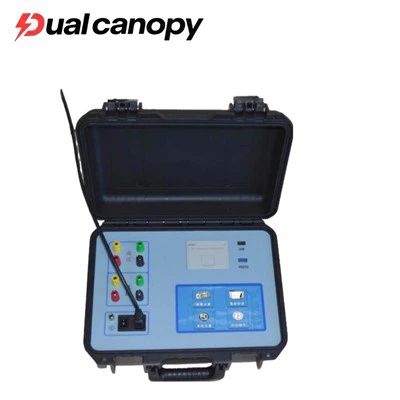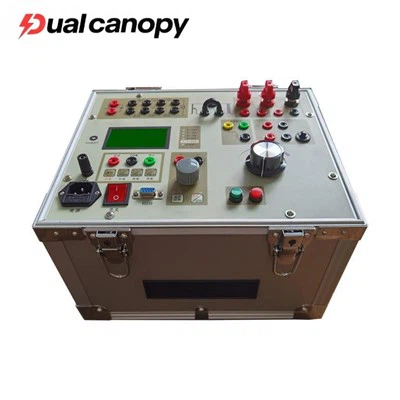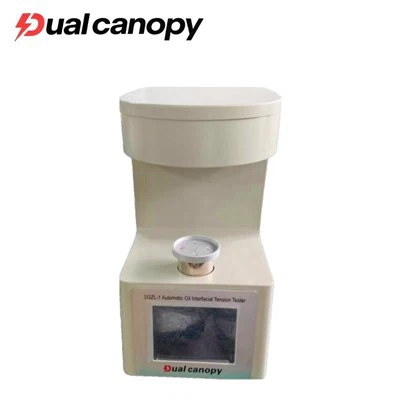I. Operating Instructions for the Mechanical Performance Testing Machine for Electrical Safety Tools (Tensile Testing Machine)
Preparatory work
Arrange the force-bearing frame, control cabinet, and stability cap testing platform of the tensile machine in sequence on a flat ground; fix the center of the ladder guide rail vertically behind the force-bearing frame (secure with anchor bolts). Inject 40 liters of 46-grade anti-wear hydraulic oil into the hydraulic station; connect the oil pipes (rod chamber to rod chamber, no-rod chamber to no-rod chamber). Complete the electrical wiring (three-phase four-wire connection to the A/B/C/N terminals of the control cabinet, the control line of the stability cap connects to the corresponding terminals), and connect the computer to the control cabinet through the communication line; connect the 300KG, 5T, etc. sensors to the designated sockets on the control board (such as J4, J6), and connect the stability cap sensor to the five-pin and four-pin sockets of the stability cap control box (pay attention to the matching of wire numbers).
Parameter settings
Turn on the power switch and enter the parameter setting interface through the control instrument: Press the "SET" key to enter, use the "MOD" key to switch parameters, and use the "←" and "→" keys to adjust the values. Set "OUT1" (loading target load, unit: N) and "OYT" (load holding time, unit: seconds), after setting is completed, press "MOD" to save, and then press the "SET" key to return to the test state.
Sample installation and test operation
Use the "upward point movement" and "downward point movement" buttons to adjust the position of the loading device. Fix the test sample (such as safety belt, foot strap, safety helmet) in place according to the standard requirements. Press the "start" button, and the motor drives the chuck to load, and the instrument automatically resets; when the load reaches the set value, the instrument starts the clock (the second window displays the holding time). After the test is completed, repeat the above steps to test the next sample.
Notes for Attention
Before the test, it is necessary to preheat for 15 minutes; during operation, it is strictly prohibited for the head and hands to approach the chuck and moving parts; non-specialists are not allowed to disassemble and repair the internal electrical components; in case of an emergency, immediately press the emergency stop button and cut off the main power supply; ensure that the equipment is reliably grounded; after the limit protection is triggered, the "reset" function or the position of the loading device needs to be adjusted to release it.
II. Usage Method of High-Voltage Sound and Light Insulation Detector
Selection and Environmental Requirements
According to the rated voltage of the tested electrical equipment (such as 0.1kV - 500kV), select the corresponding voltage level of the tester; the tester should be stored in a place with good air circulation and dryness, avoiding direct sunlight or rain.
Self-check operation
Before use, a self-check must be performed: Press the self-check button. If the indicator light flashes intermittently and is accompanied by intermittent beeping sounds, it indicates that the electrical tester is in good condition and can be used for electrical testing.
Standard Voltage Testing Procedure
Wear insulating gloves and insulating boots (for voltage levels of 10kV and above); hold the handle part below the insulating ring of the electric tester; first test the electric tester on a known electrified area (to verify its normal operation), then move towards the equipment to be tested; gradually approach the equipment. If there is an audible or visual alarm, immediately stop the electric test and confirm that the equipment is electrified.
Special Scene Precautions
In rainy days, foggy days and other humid weather conditions, ordinary insulating rod testers should not be used; in completely power-off situations, it is necessary to first use a "test signal generator" to verify the functionality of the tester; if the tester is damaged, do not attempt to repair it yourself; instead, contact the manufacturer for maintenance or replacement.
III. Key Points for Daily Inspection of Insulation Safety Tools (Auxiliary Testing)
Visual inspection
Check whether there are cracks, aging, insulation layer detachment or severe damages in the insulation part; and whether there is any looseness, rusting or fracture in the fixed connection part. If there are any doubts about the appearance, an insulation test must be conducted and the equipment can be used only if it passes the test.
Insulation resistance test
Use an insulation resistance tester (megohmmeter) to apply a direct current voltage (such as 2500V) and measure the insulation resistance value. Generally, the insulation resistance should be ≥ 100MΩ (refer to the product manual for specific standards).
Ground resistance test
For tools with grounding function (such as portable short-circuit grounding wires), measure the resistance between the casing and the grounding wire using a grounding resistance tester. The requirement is that it should be ≤ 4Ω.






